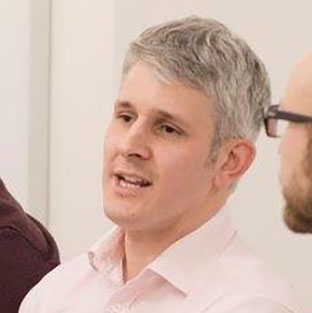Imagine a world in which autonomous vehicles have breathed new life into rural communities. Citizens will be reconnected and reintegrated into their communities, with all the benefit for health and happiness that entails. How might we bring this about to meet the needs of a predominantly rural county in 2040?
This and other such questions about how to leverage the benefits of the future were recently explored at an RSA Fellowship event in Norfolk.
Communities in rural and semi-rural areas are being done a disservice on how national governments plan for the future, with concepts such as automation, poverty alleviation and service delivery conceived, initiated and delivered to an urban understanding of how the world works.
A good example of this is the concept of social mobility which, in simple terms, relates to how your parents' background and jobs determine your own future success. In societies with high social mobility there is a weak link and in societies with low social mobility there is a strong link. If we are to address the crucial challenge of social inequality – one of the RSA’s ‘modern giant evils’ impacting society today – we need higher social mobility. In Norfolk - a rural county in the East of England - there is generally low social mobility, with your economic background largely defining your future chances of success.
Social mobility is a complex social issue and is made up of many factors, however there are several underpinning themes present in rural areas, including education, transport, economy and rurality. A key feature of rural areas is sparsity, where fewer people live, over greater distances, increasing costs of provision and reducing the viability and impact of the market due to a less healthy local economy.
This shows itself in various ways. Due to poor public transport provision and the cost of owning personal transport, young people in Norfolk are more likely to attend their closest further education college. Choice, a core principle of market provision, is not something they are able to exercise . If the college is of poor quality, it creates a cycle of economic depression for that area and the life chances of the people living there. In government funding models for local government services, car ownership is seen as a person being less deprived; where young people living in London have multiple ways to travel, being without transport in rural areas makes education and job seeking impossible.
The potential for emerging technologies and new ways of working could be disruptively good for rural areas as they give the potential to close the sparsity gap, but a lot of the work is still heavily focussed on large, rich cities which are vastly different to the majority of communities across the world. Internet of Things and Autonomous vehicles have the potential to enable rural areas to offer significant advantages to companies and the people who work for them, with lower costs associated with property prices and increased wellbeing for staff.
However, without understanding the fundamental differences between urban and rural settings the market might go for the easier option of support to urban areas with its viable population density. There are no market incentives to deliver high speed broadband to small, isolated rural villages, or to developments of two or three homes.
Complex challenges like these require a considered and co-ordinated response, and local authorities are well-placed to facilitate this. Since the summer Norfolk County Council has been running the Further Afield project, a forward look into the future of Norfolk and its people and what we need to do today to reap the benefits tomorrow. The project looks at Norfolk from now to 2040 in terms of our residents and service users, where they live and the external drivers that may affect them. There are two central objectives for the Council, namely how to fundamentally improve the Council’s strategic planning for the benefit of its people, and to identify which factors are critical to the sustainability of the future Council.
The project has identified over 230 distinct future issues for the County, ranging across technology, societal change and environmental changes, which we have narrowed down to 10 key drivers of change. The council are now testing the findings with external parties and would love to hear what you think. This survey contains snapshot briefings of each of the 10 which are available to download and use.
As part of our engagement and testing our findings we ran an RSA local event in Norwich, Norfolk with fellows to explore in more depth what they think the emerging future may be and how we as the RSA and as a County respond. There was a very real desire to challenge existing thinking and explore radical approaches to existing challenges as we move towards 2040. Ideas that Fellows wanted to explore ranged from universal basic income to new models of affordable housing, four-day working weeks to methods of deliberative democracy, and how to harness tech and support young people's aspirations.
As a large organisation which is integrated with the local community through its work, the council needs to be able to think long-term, strategically and incisively about how Norfolk will change and what we can do to meet the challenges of that change. This project helps that aim.
Dr Andrew Staines is Norfolk County Council's Head of Strategy and Delivery.
Ian Burbidge is an Associate Director in the RSA's Public Services and Communities team.


Join the discussion
Comments
Please login to post a comment or reply
Don't have an account? Click here to register.
Great to see the focus on rural areas and how transport issues create pockets of deprivation. I'm currently working on projects that use remote/virtual ways of working and communicating to bring more opportunities to rural areas.